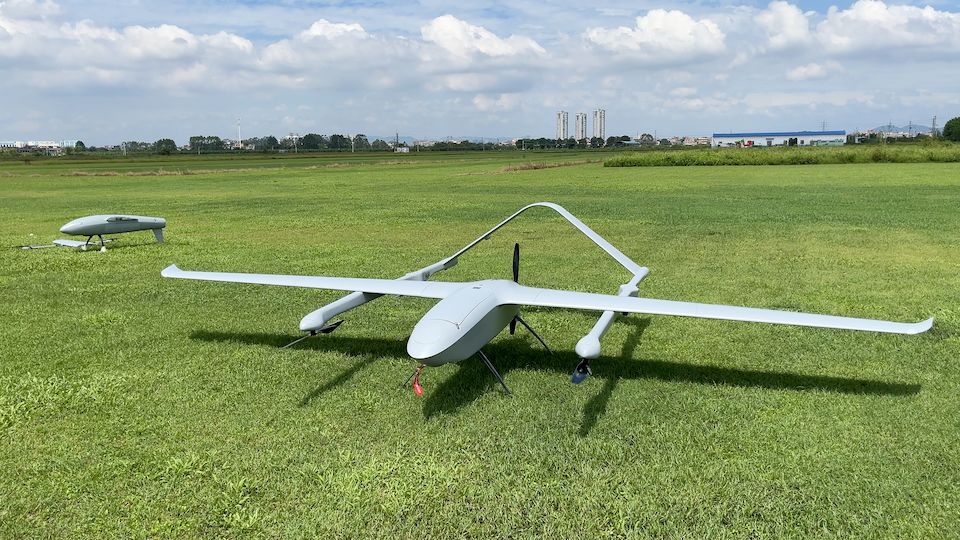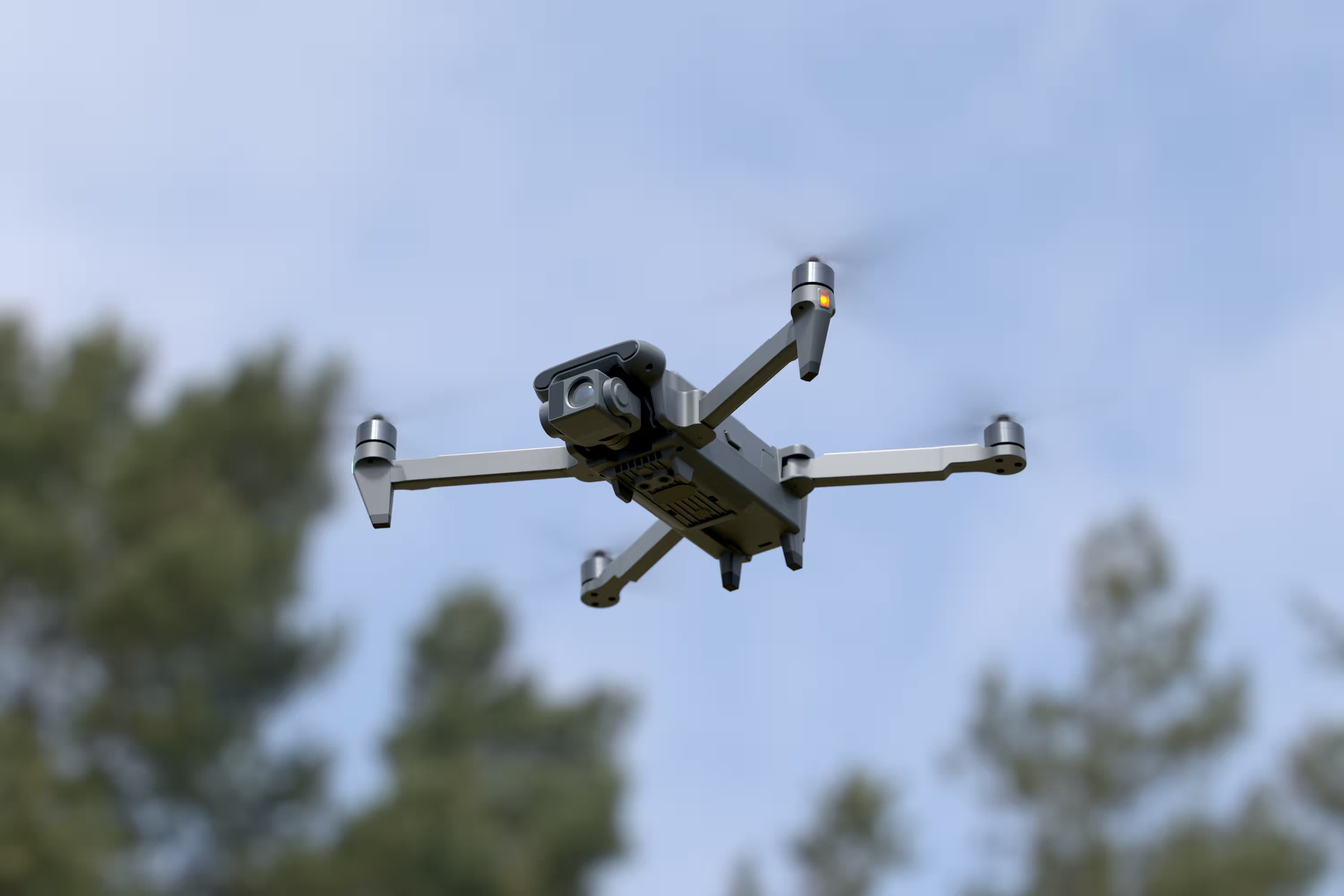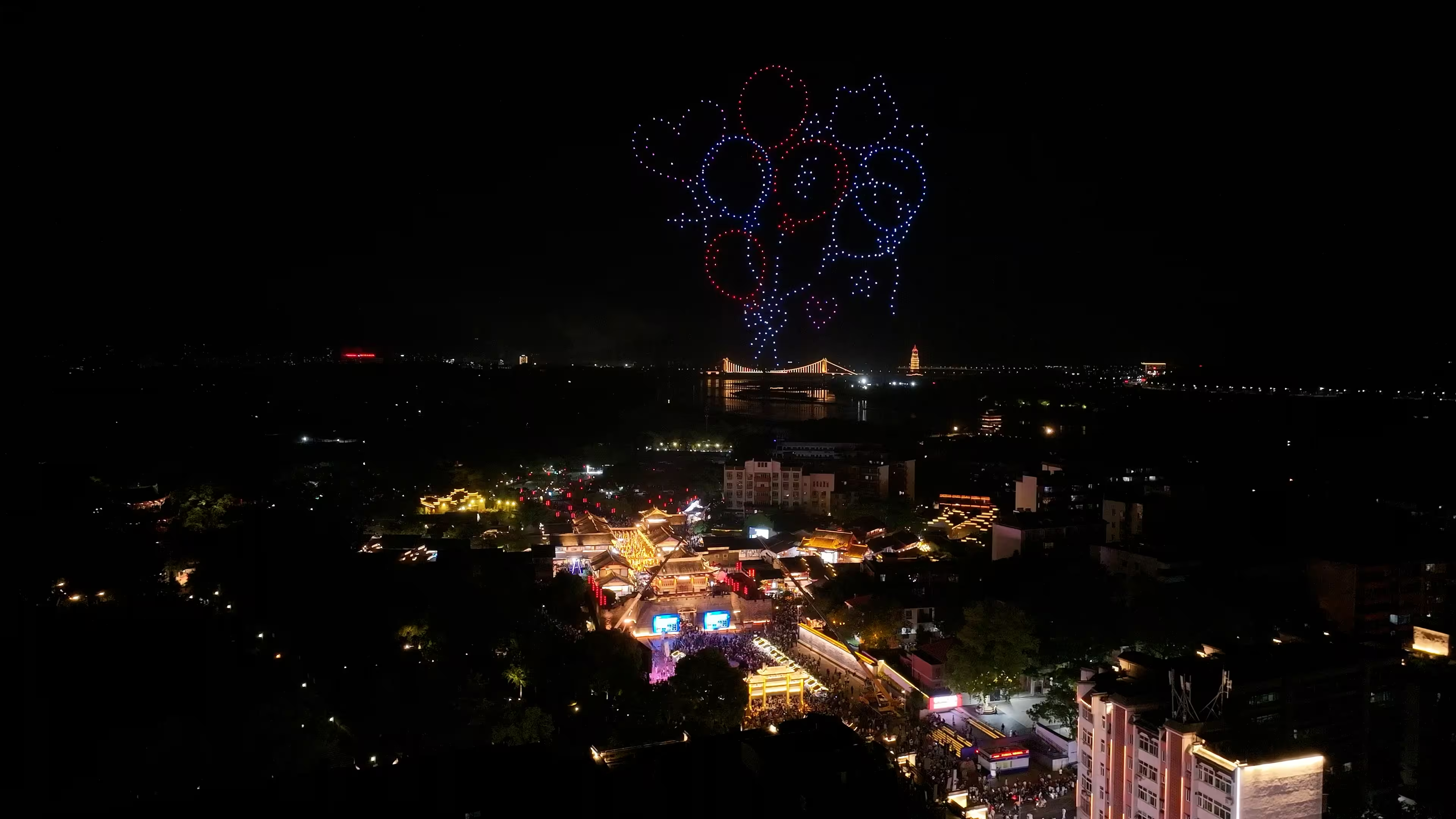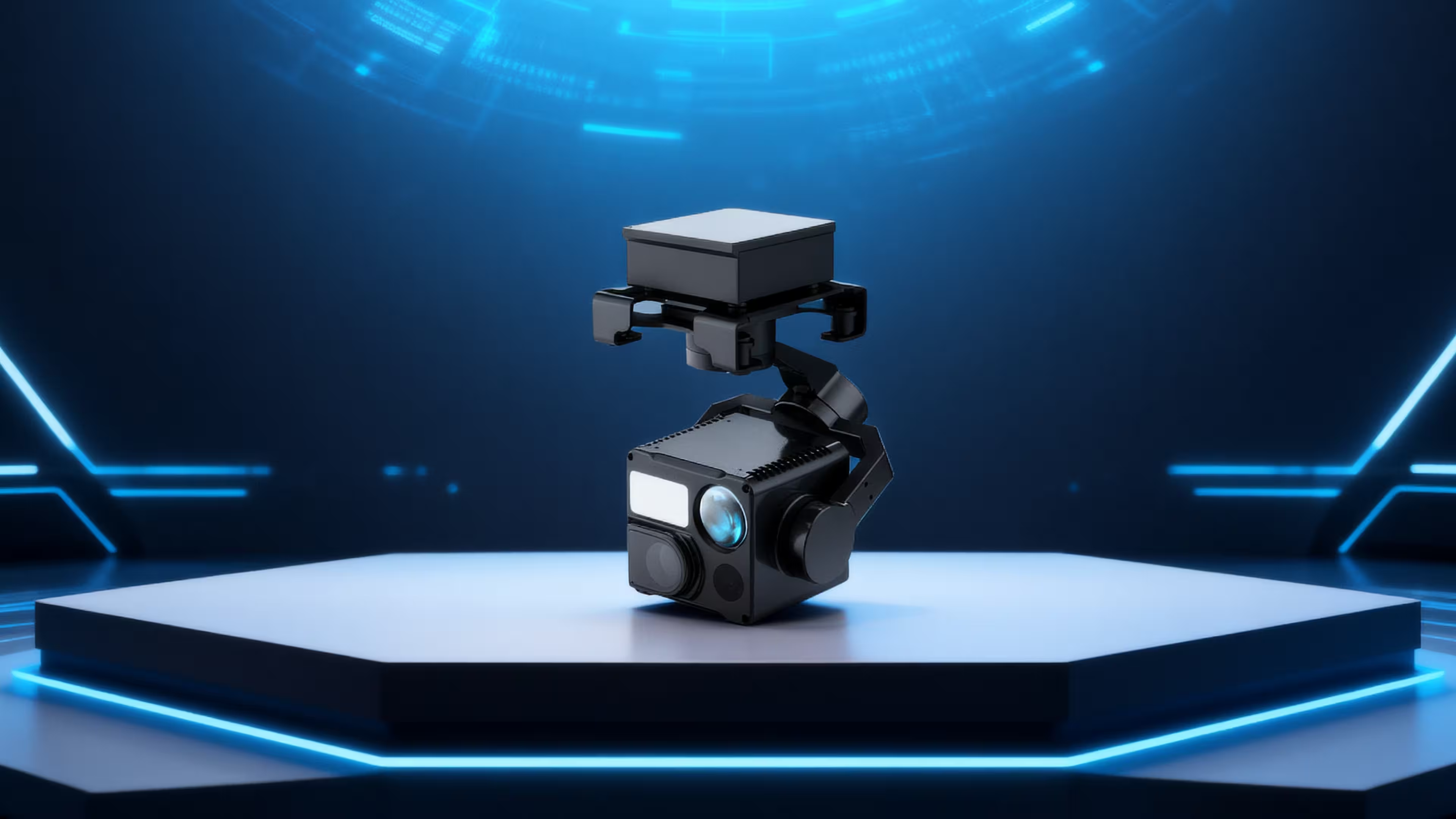Introduction
In the era of modern warfare, unmanned aerial vehicles (UAVs) are no longer optional support assets—they are core elements of operational strategy. Armed forces around the world rely on drones to extend their eyes, ears, and communication nodes beyond traditional limits. As conflicts increasingly feature complex environments—urban combat, high-altitude operations, contested electromagnetic domains—commanders demand UAVs that combine long endurance, heavy payload capacity, rapid deployment, and operational flexibility.
The MMC M11 heavy-lift VTOL UAV, has been engineered to meet these demands. With its purely electric propulsion, carbon composite structure, vertical takeoff and landing (VTOL) capability, and heavy payload capacity of up to 15kg, the M11 is designed to carry advanced mission payloads, adapt to a wide range of terrains, and provide sustained operational support in even the harshest battlefields.

This article examines the MMC M11 from a military perspective, analyzing its design philosophy, performance characteristics, mission adaptability, and tactical value across multiple domains of warfare.
Design Philosophy: Stability, Payload, and Speed of Deployment
The M11 distinguishes itself from other UAVs in its class through a careful balance of payload performance, flight stability, and ease of deployment. Its dual-boom tail design provides improved flight attitude stability, especially when operating at heavy payloads.
- Pure Electric, Low-Noise Propulsion
By utilizing a fully electric propulsion system, the M11 reduces its acoustic signature compared to fuel-powered UAVs, improving survivability against acoustic detection systems. Its thermal footprint is also minimized, making it harder to track using infrared sensors—a major advantage in contested battlespaces. - Composite Materials
The aircraft’s body is made of lightweight yet strong composite materials, enabling a maximum takeoff weight of 50kg while maintaining structural integrity under demanding conditions. - Quick-Assembly Architecture
The M11’s tool-free quick-assembly design is optimized for frontline operations. Its modular components can be assembled or disassembled in under three minutes by a single operator. Industrial-grade connectors guarantee secure attachment while ensuring long-term reliability in rugged conditions. - Dual-Boom Tail Structure
This design enhances aerodynamic stability, especially when carrying large or asymmetrical payloads. For missions involving EO/IR gimbals, heavy sensors, or resupply packages, the dual-boom configuration ensures the aircraft maintains stable flight characteristics without excessive oscillations or deviations.
Core Performance Specifications
| Category | Specification |
|---|---|
| Type | VTOL Fixed-Wing (Hybrid Layout) |
| Material | Composite carbon fiber |
| Dimensions (expanded) | Wingspan: 4962 mm × Length: 2608 mm × Height: 952 mm |
| Body Weight | 29.5 kg (without battery/payload) |
| Max Takeoff Weight | 50 kg |
| Max Payload | 15 kg |
| Endurance | 150 min (no payload), 135 min (3kg), 125 min (5kg), 105 min (10kg), 90 min (15kg) |
| Cruise Speed | 25 m/s |
| Max Speed | 35–40 m/s |
| Ceiling | 4,500 m |
| Wind Resistance | Level 7 (fixed-wing mode) |
| Deployment Time | ≤3 minutes (single operator) |
| Comms | 1.4 GHz & 450 MHz, AES128 encrypted |
| Control Range | 80 km (line-of-sight) |
| Navigation | Full autopilot with obstacle avoidance |
| Operating Temperature | -20℃ to +60℃ |
| Ingress Protection | IP54 |
| Humidity Tolerance | 10%–90% (non-condensing) |
Mission Adaptability in Military Applications
1. Reconnaissance and Intelligence Gathering
One of the primary missions of any UAV is reconnaissance. The M11, with its ability to carry single-optical, dual-optical, or triple-sensor gimbals, is ideally suited for day-and-night ISR (Intelligence, Surveillance, and Reconnaissance) missions.
- Electro-Optical/Infrared Payloads (EO/IR): Capable of detecting and tracking vehicles, personnel, or equipment in both daylight and thermal spectrums.
- Stability Under Load: The dual-boom design ensures sensor stability even under heavy gimbal payloads, reducing jitter and providing clearer imagery.
- Operational Endurance: Up to 150 minutes of flight time allows the M11 to conduct extended area surveillance, covering frontline and deep-rear positions in a single sortie.
This makes the M11 particularly valuable in border surveillance, contested terrain monitoring, and intelligence collection in high-risk environments.
2. Communications Relay and Battlefield Networking
In modern combat, maintaining resilient communications is as critical as deploying troops or armor. The M11 can be outfitted with communication relay payloads to extend tactical communication ranges across rugged terrain, dense urban environments, or electronic warfare-contested zones.
- Extended Range Data Link: With AES128 encryption and dual-band frequencies, the M11 provides secure links up to 80 km.
- Airborne Relay Node: Positioned at altitude, it can act as a “flying tower,” providing over-the-horizon connectivity for ground units, special operations teams, or naval task forces.
- Electronic Resilience: Its digital backbone is resistant to interference, enhancing network continuity in environments where adversaries actively attempt to jam communications.
3. Logistics and Resupply Missions
The ability to carry a 15kg payload makes the MMC M11 particularly attractive for logistics operations. Resupply missions in mountainous terrain, remote outposts, or contested combat zones often place human couriers or manned helicopters at great risk.
- Resupply Examples: Ammunition, medical kits, rations, or emergency repair components.
- Operational Advantage: A single M11 sortie can deliver life-saving supplies in under an hour across difficult terrain that would take ground convoys several hours to traverse.
- Ship-to-Shore Support: Naval units can use the M11 for rapid resupply of small arms, sensors, or communication gear from ship to shore.
The aircraft’s VTOL capability ensures that no prepared runway is required—only a small landing zone, which is invaluable in battlefield conditions.
4. Electronic Warfare Support
The M11’s payload bay can be equipped with jamming modules, spectrum analyzers, or radar reflectors, enabling it to act as part of an electronic warfare (EW) strategy.
- Electronic Countermeasures: Degrading enemy communications by broadcasting interference.
- Electronic Support Measures: Detecting and analyzing enemy signals, providing commanders with real-time spectrum awareness.
- Deception Operations: Carrying decoys or radar reflectors to confuse adversary targeting systems.
The UAV’s endurance allows it to loiter within the EW envelope longer than smaller drones, amplifying its tactical impact.
5. Maritime and Naval Operations
The M11’s resilience to 7-level winds in fixed-wing mode makes it well-suited for maritime conditions. With modifications, it can operate from ships, supporting naval task forces in the following ways:
- Maritime Patrol: Monitoring coastal waters, detecting hostile vessels, or conducting anti-piracy patrols.
- Search and Rescue (SAR): Delivering emergency beacons or flotation devices to survivors at sea.
- Fleet Communications: Acting as a flying relay to extend communications among dispersed ships.
Its electric propulsion reduces the risk of detection, crucial for stealth naval operations.
6. High-Altitude Operations
With a ceiling of 4,500 meters, the M11 is capable of operating in mountainous regions where thinner air reduces the performance of many conventional drones.
- Tactical Advantage: Useful in border surveillance along mountainous frontiers.
- Resupply Role: Delivering supplies to high-altitude units or forward operating bases.
- ISR Missions: Providing overwatch in terrain that limits ground-based observation systems.
Advantages Over Conventional UAV Platforms
- Rapid Deployment: Single-operator assembly within three minutes is unmatched by many competing UAVs.
- Heavy Payload: A 15kg payload extends its mission scope far beyond traditional ISR roles.
- Operational Flexibility: From ISR to EW, from logistics to maritime support—the M11 is not a single-role asset but a multi-mission platform.
- Survivability: Electric propulsion reduces both acoustic and infrared signatures, making it harder to detect.
- Autonomous Capability: Full autopilot, automated takeoff/landing, and obstacle avoidance reduce operator workload and improve mission reliability.
- Ruggedized Design: With IP54 protection, resistance to humidity, and temperature tolerance from -20℃ to +60℃, the M11 is battle-hardened for diverse environments.
Case Study References from Real-World Military UAV Operations
While the MMC M11 is a relatively new entrant, its design aligns with trends already observed in real-world combat zones:
- Ukraine Conflict (2022–2025): Heavy-lift drones have been used for ammunition delivery, frontline resupply, and ISR missions. The endurance and payload class of the M11 directly address these operational demands.
- Middle Eastern Operations: UAVs capable of withstanding desert heat and dust have been deployed for ISR and communication relay. The M11’s IP54 protection and -20℃ to +60℃ operating range suit such climates.
- Naval Applications: The US and Japanese navies have tested UAVs as communication relays and logistics platforms for ship-to-shore missions. The M11’s design parallels these requirements, with its stability in strong winds enhancing maritime potential.
Strategic Value for Modern Armed Forces
The MMC M11 represents more than a UAV—it is a force multiplier. By providing sustained ISR, resilient communications, flexible logistics, and EW support, the M11 enhances the ability of small units and large formations alike to conduct operations effectively.
In an age where speed of decision-making defines victory, the M11’s ability to quickly deploy, operate autonomously, and provide actionable intelligence enables commanders to shorten the OODA loop (Observe–Orient–Decide–Act).
Its role as a tactical aerial extension of ground and naval units cements its value in multi-domain operations, particularly in scenarios that blend land, sea, air, and electronic warfare.
Conclusion
The MMC M11 is not just another UAV—it is a battlefield asset designed for the next generation of military operations. With a unique combination of heavy payload capacity, long endurance, VTOL flexibility, quick deployment, and rugged adaptability, it offers a toolset that meets the challenges of modern warfare head-on.
From frontline ISR to resupply, from electronic warfare to naval operations, the M11 stands as a versatile, reliable, and survivable UAV platform. It provides armed forces with a significant tactical edge, ensuring not just mission success but also the safety and efficiency of personnel who rely on aerial systems in the most demanding conditions.
As militaries worldwide continue to integrate drones into their operational fabric, the MMC M11 offers a glimpse into the future—where heavy-lift, multi-mission, rapid-response UAVs redefine what is possible in contested and complex battlespaces.




